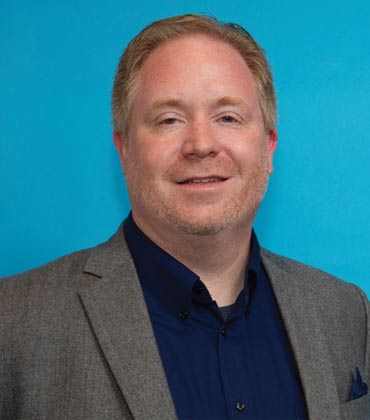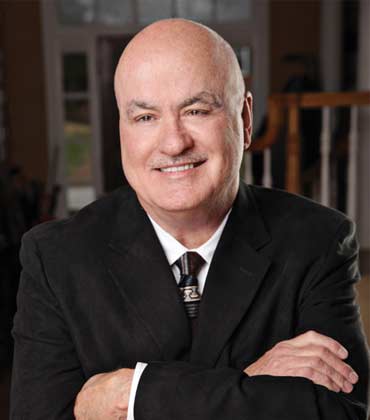THANK YOU FOR SUBSCRIBING
The automotive industry is more focused than ever on remanufacturing, accountability, and sustainability. But one question continues to weigh on the minds of forward-thinking manufacturers: What should be done with parts that are too complex to discard, too damaged to reuse, and too valuable to ignore? Headlamps and tail lamps in lighting assemblies are prime examples—packed with semiconductors and microchips. Despite their high material value, these components are often sent to landfills after just one lifecycle. That’s where Llink Technologies steps in—not as a recycler, but as a remanufacturing partner redefining the lifecycle of automotive lighting. Through its patented process, the company restores headlamps and tail lamps to OEM standards and fuels growth through a scalable, automated system. This allows OEMs to reintroduce high-value components into the supply chain faster and more efficiently while reducing Scope 1, 2, and 3 emissions. The result? A rare trifecta: measurable sustainability impact, lower costs and faster availability for end users, and a scalable model that supports long-term growth for manufacturers. What was once written off as a liability is now recast as a driver of progress, efficiency, and impact— and Llink Technologies is leading the charge. “Our three-pillar approach brings together sustainability, end-user value, and growth potential to create a smarter, more responsible way of doing business in the automotive lighting industry,” says Chelsea Jensen, Business Operations Manager. OEM-Grade Quality with Cost and Availability Benefits One of Llink Technologies’ standout achievements is maintaining OEM fit, form, and function at a significantly reduced cost up to 40 percent lower than that of new parts and competitive with after-market knock-offs. The remanufactured assemblies are fully certified, fit to vehicle exactly as new, meet all federal and OEM-specific testing standards—including DOT and FMVSS—and come with an OEM warranty.
A customer’s journey from being a showroom visitor to a vehicle owner hinges primarily on their experience across different stages of the sales funnel. One way automotive dealers can reinforce positive customer experiences is by preemptively obtaining their credit and identity credentials in a secure and compliant manner to assess their creditworthiness early on. This translates into accelerated loan approvals, enhanced transaction efficiency, and improved sales closures. Identifying this, 700Credit, a leader in the credit service industry, strategically brings pivotal customer insights, including consumers’ credit scores and identity verification to automotive dealerships in the early stages of the sales process. Its solutions provide dealers access to customer information necessary to make the right funding decisions before initiating transactions, while closely monitoring compliance. 700Credit is the largest provider of credit reports, compliance solutions, soft pull products and identity verification & fraud detection solutions to automotive, RV, marine, and power sports dealers. Its growth is anchored in industry partnerships, with integrations extending to over 200 providers in the automotive space. “We integrate seamlessly into dealer native systems, expediting sales and compliance processes for smoother, quicker, and more effective operations,” says Ken Hill, managing director of 700Credit. Defying the Odds with Innovative Solutions With two decades of deep industry knowledge, 700Credit foresaw the shift toward prequalification—the ability to foretell an individual’s creditworthiness—in the industry and proactively offered innovative solutions to support this growing trend. One such innovation is the integration of the soft pull prequalification feature into dealership website and sales processes. Whether seamlessly incorporated into a dealership’s digital retailing solution or featured as a standalone prequalification application on the website, the integration allows potential car buyers to check their creditworthiness by providing basic demographic information, without impacting their credit score. The prequalification feature on the dealer’s website provides precise payment estimates at the beginning of the sales journey, attracting consumers browsing the site to make purchase decisions faster. Meanwhile the dealership gains valuable insights into the consumer’s credit score and existing loan balances even before the initial conversation, empowering them to make effective offers earlier in the sales process.
Advanced driver-assistance systems (ADAS), including adaptive cruise control and automatic braking, have become standard in vehicles, playing a vital role in preventing accidents and ensuring road safety. But these complex systems still need to be precisely calibrated to ensure they perform as intended. ADAS Solutions USA, offers a groundbreaking approach to ADAS calibration that prioritizes accuracy and places the customer at the center of its operations. Its mission is to provide top-notch calibration services to collision centers and automotive repair businesses nationwide. As a B2B business, it emphasizes educating stakeholders about the benefits of prioritizing proper calibration methods. “Many stakeholders don’t grasp the importance of proper calibrations or the differences between calibrating various manufacturers. For instance, calibrating an Audi is not the same as calibrating a Ford,” says Frank Phillips, vice president of strategy. It actively bridges this knowledge gap by educating its partners, aiming to empower them with the information needed to better serve their customers. “We want to equip everyone involved in the repair process to understand that just because a dashboard warning light isn’t on, it doesn’t mean a vehicle is safe. The digital impact of a collision can be significant, and thorough research is essential,” states Jerry Cathcart, founder and chief operating officer. Setting Industry Standards There exists a blind spot regarding the intricacies of ADAS calibration and the risks associated with improper repairs. This has led to businesses attempting to perform calibration services from mobile units in environments that do not meet manufacturer standards. These calibrations often occur in parking lots or crowded repair centers, where surrounding objects can interfere with data exchange between the vehicle’s systems and their targets. There is no established standard outlining best practices for collision repairs or windshield changes. OEMs are often reluctant to provide clear, concise guidance. ADAS Solutions USA aims to counter this by providing clear, actionable information that adheres strictly to OEM guidelines, to ensure that every vehicle is repaired according to the highest safety standards. “We must reevaluate what constitutes an acceptable calibration method and the necessary environment for these processes,” states Phillips. Specialized Static Calibration Centers Nationwide to Enhance Precision and Safety

Nick Rumberger, Executive Director, Engineering & Sales, BILSTEIN

Trent Randles, Manufacturing Engineering Manager, BorgWarner

Michael Spliedt, Senior Engineering Manager, Yanfeng Global Automotive Interiors

Blake Ritter, Branded Products Segment Manager, Lincoln Industries

David Bailey, Senior Sales Development Manager, Edmunds

Michael Cavaretta, Analytics Executive - Quality Analytics, Ford Motor Company

Monte Heisler, Director, Manufacturing Quality, North American Stamping Group
The automotive lighting market is advancing with LED and laser technologies that improve visibility, safety, aesthetics, and integrated intelligent systems for enhanced communication and user experience.
Remanufactured automotive lighting assemblies offer cost-effective and sustainable solutions by restoring used components. They enhance repairs, improve safety, and address environmental concerns in the automotive industry.
Illuminating Change in Automotive Lighting
Innovation is reshaping the automotive aftermarket, with remanufactured lighting assemblies emerging as a key focus. Remanufactured automotive lighting assemblies offer a compelling example of how performance, sustainability, and economy can coexist in harmony. Far from being a compromise, these solutions reflect a broader shift in the industry, one that values resourcefulness as much as raw advancement. Once viewed primarily through the lens of cost savings and sustainability, this sector has evolved into a high-tech domain driven by modern vehicle demands, rising energy-efficiency standards, and tightening environmental regulations. Drivers now seek solutions that deliver reliability and environmental responsibility. Remanufactured lighting assemblies meet these needs by restoring used components to like-new condition while often incorporating updated materials and improved processes along the way. This convergence of technical excellence and environmental mindfulness reveals the hidden potential in what might otherwise be discarded. It's not just about reducing waste; it’s about extending the life cycle of high-value components and aligning with a circular economy model that benefits manufacturers, consumers, and the planet. Remanufacturing lighting assemblies demands precision. From optics and housings to electronics and coatings, each element must be carefully evaluated and restored to ensure optimal functionality. This process, far from being simplistic, requires a deep understanding of modern vehicle systems and a commitment to quality that rivals new production. What truly sets remanufactured lighting apart is its ability to bridge gaps. It connects affordability with performance, sustainability with innovation, and legacy with modernity. As automakers and aftermarket providers increasingly emphasize eco-conscious design, remanufactured solutions are a necessity. They demonstrate that responsible design doesn't have to mean compromise and that sometimes, the best way forward is to reexamine what we already have and make it better. This edition highlights the expert perspectives of Jason Brown, Information Technology Security Manager, The Shyft Group, and Brendan J. Chan, Ph.D., Sr. Chief Engineer – Autonomy and Active Safety, Oshkosh Corporation. These esteemed professionals share their invaluable insights on the developments and challenges within the sector, as well as possible solutions. We hope that the valuable insights from industry leaders featured in this edition will help you make informed decisions for your business.
 Copyright © 2025 AutoTech Outlook. All Rights Reserved | Privacy Policy | Subscribe | Sitemap | About us | Feedback Policy | Editorial Policy
Copyright © 2025 AutoTech Outlook. All Rights Reserved | Privacy Policy | Subscribe | Sitemap | About us | Feedback Policy | Editorial Policy